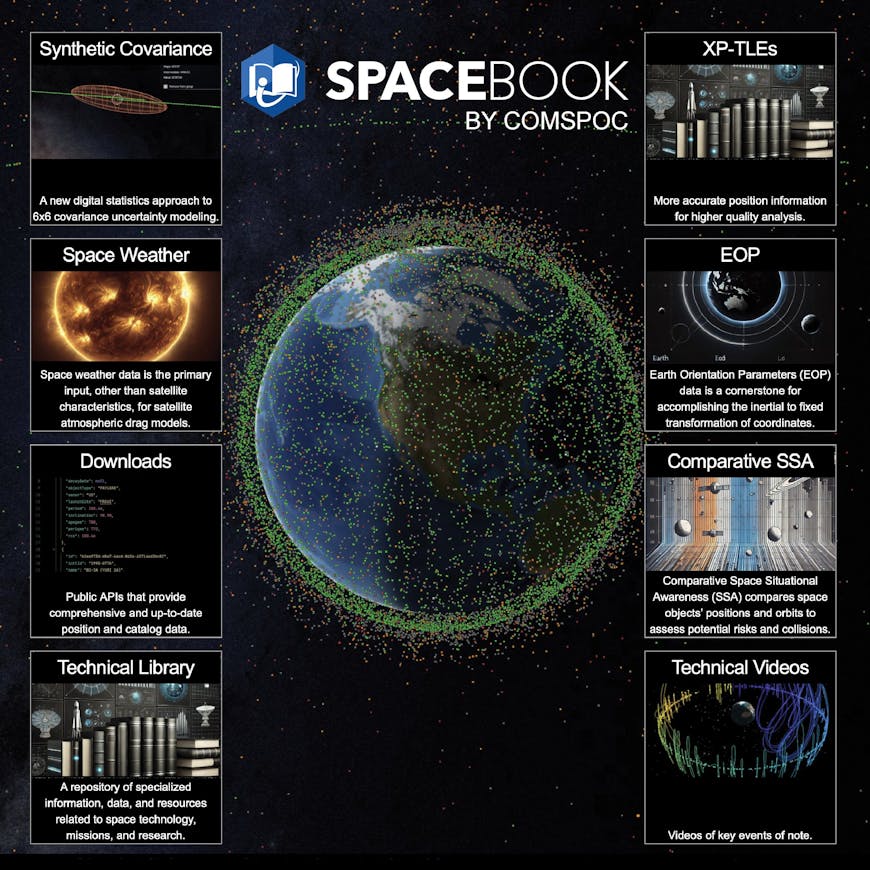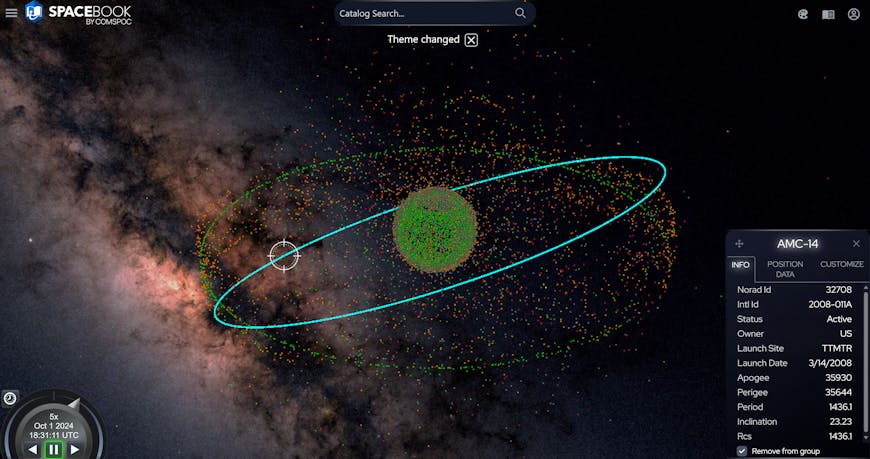Spacebook Makes Space Data Accessible for All with CesiumJS
COMSPOC, a commercial provider of space situational awareness (SSA) software, has released Spacebook to make space data free to access and visualize with the help of CesiumJS. Because space is crowded and sometimes contentious, awareness is critical; with Spacebook, the space community can compare data.
Spacebook was released in September 2024 to make space data freely available to the space community.
Spacebook was released in September 2024. A central repository for space data and advancing the industry, “Wikipedia for space,” Spacebook is a concept the COMSPOC team had been discussing for a decade. COMSPOC itself has been operating every minute since 2014, and visualization tools in its SSASuite are built on Cesium.
For free, Spacebook users are able to download current and historical position, weather, and error data; visualize the data in the Cesium-powered Explorer; and expand their knowledge with technical papers and videos available on comspoc.com. Those in government, industry, and education are encouraged to create saved views with the resources, investigating individual space objects or even performing flight safety analysis. Visualizations can be saved with a free account.
With Cesium, Spacebook’s Explorer viewer enables users to display orbit tracks and covariance ellipsoids for objects, color-code groups of objects or modify dot sizes for easy visual identification, and adjust animation speed. COMSPOC shared an anecdote of an educator in Hawaii, USA, who got a permit to launch a cubesat. Using Spacebook, her university and high-school students are able to track this satellite in 3D in near real time and do their own SSA analysis.

Spacebook users can download space weather data, compare orbits with the CesiumJS-powered Explorer, and dig into technical papers and videos. Courtesy COMSPOC.
Position property average, for example, is calculated 10 times a second for 26,000 objects in Spacebook, so locations are constantly updated. Spacebook data uses two-line element (TLE) sets for object position data, SGP4-xp for improved orbital predictions, and synthetic covariance for comparing TLEs. COMSPOC acquires this information from Space-Track, CelesTrak, and the US government and intends to accept data from users in the future, too. These massive datasets of thousands of points are visualized in conjunction with a high-precision WGS84 globe in CesiumJS, accurately displaying object location at a given time in interactive 3D to enhance situational awareness and learning.
“Having great data is one thing. A functional, friendly viewer that gives users the sizzle and shows the data is another. We were able to bring in other features because we didn’t have to worry about rebuilding the globe. Our expertise is in space analytics, not 3D modeling and engine design. Using Cesium lets us get to our expertise as soon as possible,” said Steve Shogren, development lead for Spacebook.

Interactively investigate individual space objects or perform analyses in a web browser with Spacebook. Courtesy COMSPOC.
Although COMSPOC recently released Spacebook, the team is already working on more data sources and new features.
Check out how other aerospace companies are using Cesium, and try it today to make your space apps precise, detailed, and shareable.